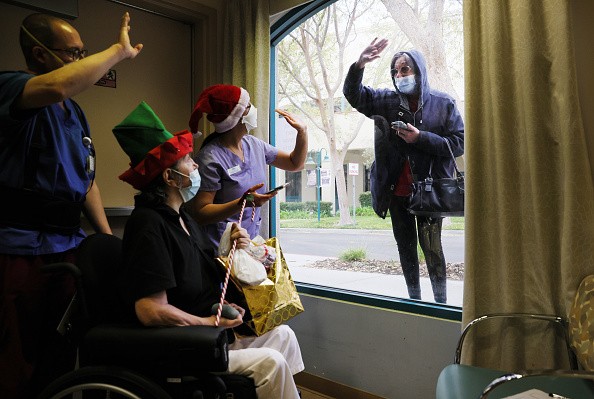California Extends Stay-at-Home Order Amid Sustained Virus Surge

Southern California will be welcoming 2021 with strict restrictions and a struggling economy as its regional stay-at-home order was extended because of a sustained coronavirus outbreak.
California's health secretary said that the-stay-at-home order extension would apply to San Joaquin Valley as well.
According to Fox News, both regions are already facing a zero percent intensive care unit (ICU) capacities, as stated by health officials.
It's part of the current rules announced by California Governor Gavin Newsom at the start of December, in which a mandatory three-week shutdown and stay-at-home order would be in place once a region falls below 15 percent ICU capacity.
"We set the regional stay-at-home order, and regions must remain under the order for at least three weeks," California Health and Human Services Secretary Dr. Mark Ghaly said on Tuesday.
A map illustrating which counties can and can't stay open due to stay-at-home orders and reopening restrictions could be seen on ABC 7.
Capacity-Based Stay-at-Home Order to Expire on Monday
The state-imposed rule regarding bed capacity was put in place ahead of the holidays and is set to expire on Monday.
But Ghaly said the length of extension of the stay-at-home order and other restrictions in Southern California is still unknown.
Ghaly said health authorities would assess the data daily. However, predictions show that the regions may not have more than 15 percent ICU capacity for at least the next four weeks.
He said capacity was projected as "not improving" in Southern California and San Joaquin Valley and will "continue to exceed capacity."
If any of the state's other regions also face a similar situation with ICUs, they would likely fall into another three-weeks.
So far, Northern California has the most space, with 27.9 percent of ICU space available. Next is Sacramento that has 19.1 percent, and the Bay Area, which has 10.4 percent.
The entire state reported a 12.6 percent positivity rate over the last two weeks, with more than 31,000 new virus cases confirmed on Tuesday alone. There have been more than two million cases recorded in the state.
Stay-at-Home Order Extension Issues Cold Reminder of Virus Impact
Even though some already expected the regions to go on an extended stay-at-home order, the measure still issued a reminder to the state that the pandemic can block normalcy well into the New Year. That is despite the promise of new vaccines in the months to come.
Residents were only getting used to life without the order as the pandemic dragged on to its third wave. But even as the coronavirus showed rapid spread in the state over the last two months, there were signs that the health measures were doing some good, reported Los Angeles Times.
The pace of growth in virus numbers slowed down over the recent weeks, and on average, the daily number of cases reported over a weeklong period has fallen slightly.
The peak for a seven-day long period was on the week ending on December 22, in which there were 45,000 cases reported.
On Monday night, the average daily number went down to about 38,000.
Southern California and the Central Valley will still be in the red zone of the state's color-coded classification system. But in the Bay Area, the restrictions were starting to show some signs of saving lives.
Subscribe to Latin Post!
Sign up for our free newsletter for the Latest coverage!
© 2025 Latin Post. All rights reserved. Do not reproduce without permission.















